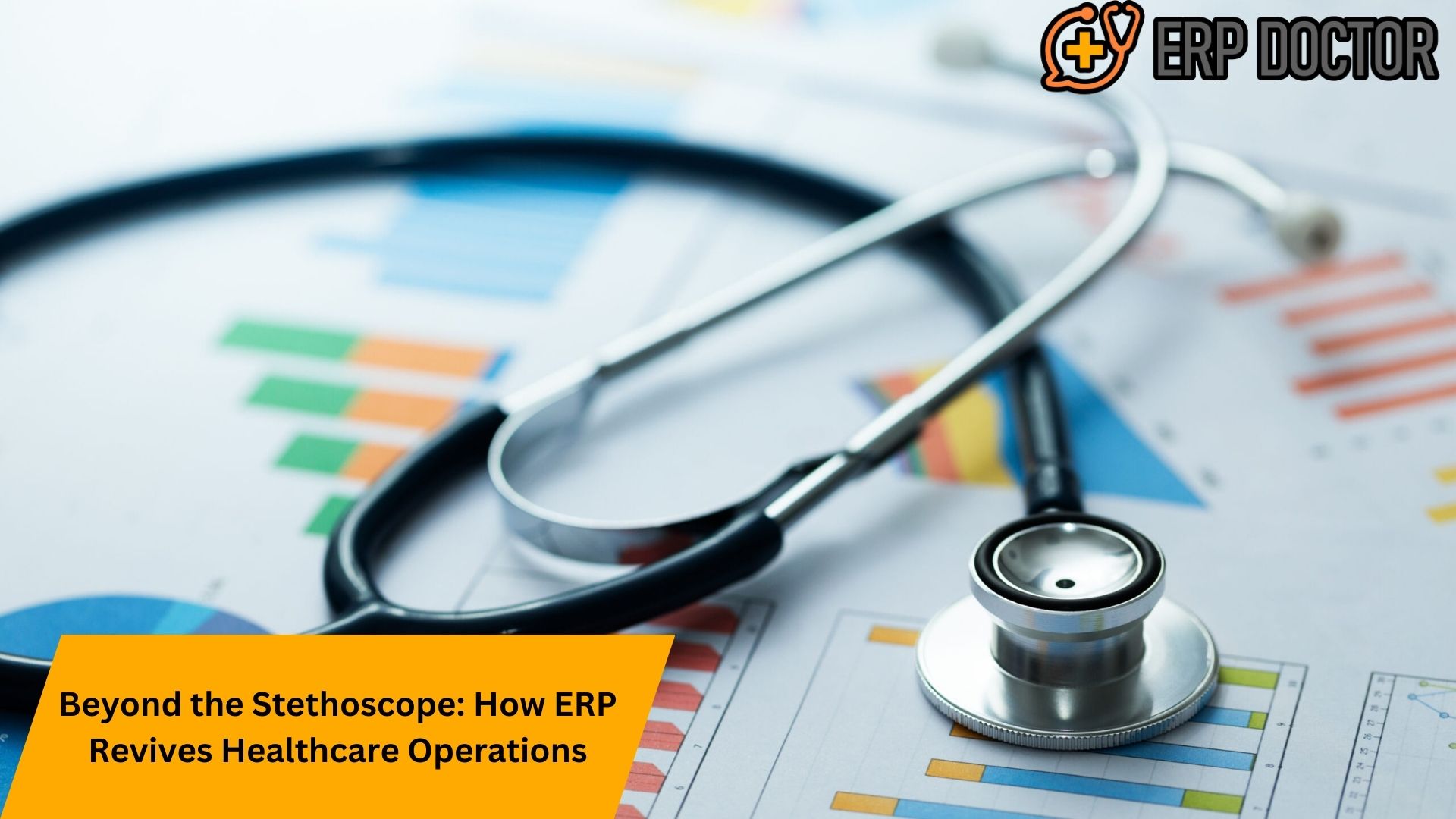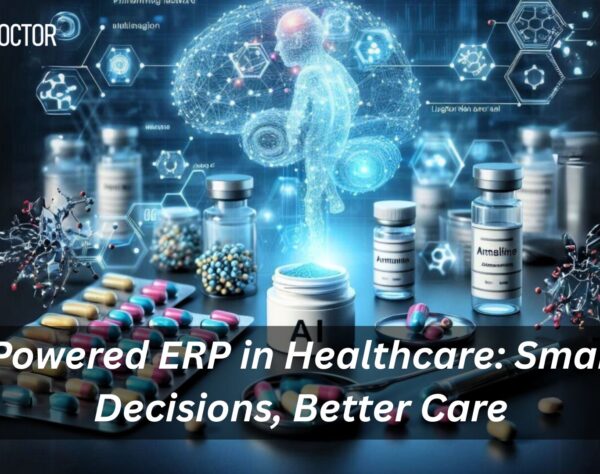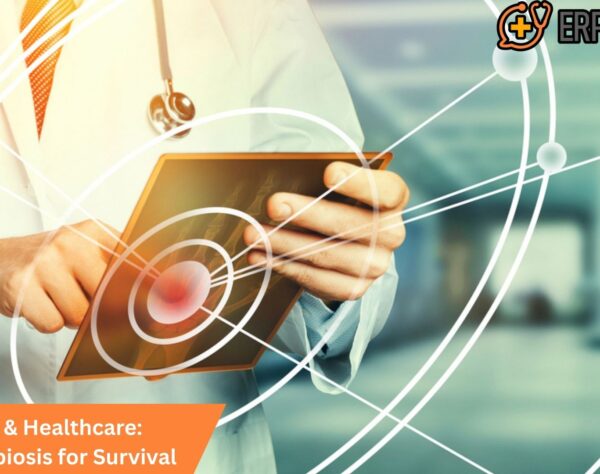
Beyond the Stethoscope: How ERP Revives Healthcare Operations

Transforming Healthcare with ERP: A New Era of Efficiency
The healthcare industry faces mounting challenges, from patient data management to regulatory compliance and cost control. Implementing ERP solutions in healthcare industry can optimize operations, streamline workflows, and enhance patient care. This blog explores how ERP is revolutionizing the healthcare sector, making it more efficient, data-driven, and patient-centric.
1. Understanding ERP in Healthcare
Enterprise Resource Planning (ERP) is a powerful software solution that integrates multiple healthcare functions, including finance, patient records, supply chain, and human resources. By centralizing data, ERP enables hospitals, clinics, and other healthcare providers to operate efficiently while ensuring compliance with stringent regulations.
2. Key Benefits of ERP for the Healthcare Industry
a. Improved Patient Care
An ERP system centralizes patient data, reducing errors and ensuring that doctors and nurses have real-time access to medical histories, prescriptions, and test results.
b. Enhanced Operational Efficiency
Hospitals can streamline appointment scheduling, inventory management, and staff allocation with an ERP system, leading to better resource utilization.
c. Regulatory Compliance and Data Security
The healthcare industry must adhere to strict regulatory standards such as HIPAA and GDPR. ERP solutions ensure compliance by securing sensitive patient data and maintaining detailed audit logs.
d. Optimized Financial Management
With an ERP system, healthcare providers can manage billing, insurance claims, and revenue cycles more efficiently, reducing financial discrepancies.
e. Supply Chain Optimization
From medical equipment to pharmaceuticals, ERP helps hospitals manage inventory levels, prevent shortages, and reduce waste by automating procurement and stock monitoring.
3. How ERP Transforms Healthcare Operations
a. Integration Across Departments
ERP connects departments, breaking silos between administration, finance, and clinical teams. This fosters better coordination and data-driven decision-making.
b. Real-Time Analytics and Reporting
Advanced ERP solutions provide healthcare administrators with real-time dashboards, allowing them to monitor patient flow, staff efficiency, and financial performance.
c. Automation of Routine Tasks
Administrative workflows such as patient admissions, discharge processes, and claims processing are automated, reducing manual effort and improving accuracy.
d. Scalability for Growing Healthcare Needs
As healthcare facilities expand, ERP systems can scale to accommodate more patients, staff, and locations without disruptions.
4. Choosing the Right ERP for Your Healthcare Organization
Selecting an ERP system requires evaluating factors such as customization, cloud vs. on-premise deployment, user-friendliness, and integration capabilities with existing healthcare software like EHR (Electronic Health Records) and telemedicine platforms.
5. Overcoming Implementation Challenges in Healthcare ERP
a. Addressing Resistance to Change
Healthcare professionals may be hesitant to adopt new technology due to concerns about complexity and usability. Providing adequate training and demonstrating ERP’s benefits can help drive adoption.
b. Ensuring Seamless Data Migration
Transferring large volumes of patient data from legacy systems to a new ERP platform can be challenging. A well-planned migration strategy, including data validation and backup procedures, ensures a smooth transition.
c. Maintaining Compliance and Security
ERP solutions must align with healthcare regulations, requiring regular updates, access controls, and cybersecurity measures to protect sensitive patient information from breaches and unauthorized access.
6. Future Trends in Healthcare ERP
a. AI and Machine Learning Integration
AI-driven analytics and predictive modeling are enhancing ERP capabilities in healthcare. These innovations help optimize treatment plans, detect fraud, and forecast patient needs more accurately.
b. Cloud-Based ERP Adoption
With increasing demand for scalability and remote access, more healthcare organizations are moving to cloud-based ERP solutions. This approach reduces IT infrastructure costs and enhances system accessibility.
c. IoT and Wearable Device Connectivity
Modern ERP systems are integrating with IoT devices and wearable health monitors, allowing real-time patient tracking, remote monitoring, and data-driven decision-making for improved healthcare outcomes.
7. Measuring ERP Success in Healthcare
a. Key Performance Indicators (KPIs)
Hospitals and clinics can measure ERP effectiveness through KPIs such as reduced patient wait times, improved billing accuracy, lower operational costs, and enhanced staff productivity.
b. Continuous Improvement Strategies
Regular ERP performance evaluations, user feedback collection, and system upgrades ensure that the healthcare organization continues to benefit from the ERP investment over time.
The integration of ERP in the healthcare industry is not just a trend—it’s a necessity for modern healthcare providers looking to enhance efficiency, ensure compliance, and improve patient outcomes. By leveraging ERP, hospitals and clinics can achieve streamlined operations, reduced costs, and better patient care, positioning themselves for long-term success in an ever-evolving industry.
FAQs
1. How does ERP differ from EHR in healthcare?
ERP manages organizational operations like finance, HR, and supply chain, while EHR focuses on patient medical records and clinical workflows.
2. Can small clinics benefit from ERP solutions?
Yes, ERP solutions are scalable and can help small clinics streamline administrative processes, manage billing, and improve operational efficiency.
3. How does ERP enhance patient care in hospitals?
ERP provides real-time access to patient records, reduces errors, optimizes staff allocation, and ensures timely treatment.
4. What are the biggest challenges of implementing ERP in healthcare?
Challenges include high initial costs, staff training, data migration complexities, and integration with existing healthcare software.
5. How does ERP improve inventory management in hospitals?
ERP automates stock tracking, prevents shortages, and ensures timely procurement of medical supplies and pharmaceuticals.
6. Is cloud-based ERP better for healthcare organizations?
Cloud-based ERP offers scalability, remote access, and lower infrastructure costs, making it a preferred choice for modern healthcare providers.
7. Can ERP help healthcare organizations comply with regulations?
Yes, ERP systems have built-in compliance features to adhere to HIPAA, GDPR, and other healthcare data security regulations.
8. What role does ERP play in hospital financial management?
ERP automates billing, manages revenue cycles, tracks expenses, and ensures accurate financial reporting.
9. How does ERP support telemedicine services?
ERP integrates with telemedicine platforms to schedule virtual appointments, manage patient records, and streamline remote consultations.
10. What are the key features to look for in a healthcare ERP system?
Look for features like patient data integration, financial management, compliance tracking, analytics, inventory control, and scalability.







